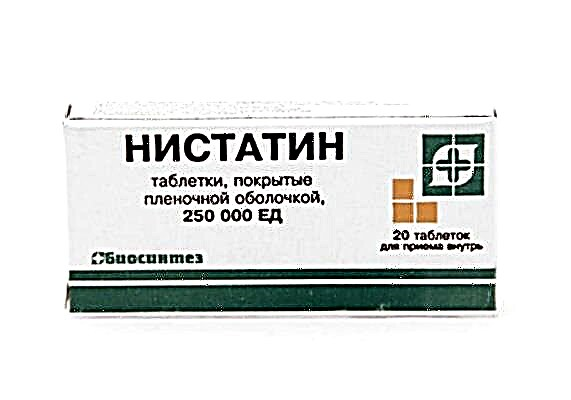
Milk porridge is a common dish for the children's menu. They are introduced to the menu of toddlers who have already tried dairy-free cereals - first gluten-free (rice, corn, buckwheat), and then others. They are high in calories and nutritious, most children like them and provide little ones with energy.


Benefits and composition
From porridge, the child receives vegetable proteins and carbohydrates, as well as dietary fiber, vitamin compounds, various trace elements and minerals. All of these substances are essential for the normal growth of babies.
- Rice porrige rich in calcium, potassium, various vitamins, amino acids, lecithin and zinc. It is considered easily digestible and hypoallergenic, characterized by a pleasant taste and texture.
- In buckwheat there is a lot of iron and vegetable proteins, therefore, such cereals are recommended for nutrition with low hemoglobin and insufficient body weight. Most children like buckwheat porridge, it rarely provokes allergies, it is rich in magnesium, copper, calcium, vitamins B1, PP and others.
- Corn porridge contains a lot of vitamin A, calcium, selenium, amino acids, iron, dietary fiber. Eating it reduces bloating and inhibits fermentation. Polyunsaturated fats present in corn grits have a positive effect on the development of the nervous system.
- Millet porridge rich in magnesium, B vitamins, manganese, iron, silicon, fluorine and copper. This dish is good for the cardiovascular system and liver.
- In oatmeal a lot of vegetable proteins, unsaturated fats, mineral salts, B vitamins. Such porridge is a useful source of fiber.
- Barley and pearl barley the child will receive potassium, phosphorus, selenium, vitamins, essential amino acids, choline, calcium and other substances. Such cereals are nutritious, relieve constipation, stimulate digestion and increase the body's defenses. But due to heavy digestion, they are not recommended to be given earlier than 1.5-2 years.
- In semolina a lot of starch and protein, but less dietary fiber and vitamin compounds than other cereals, so it is usually offered from 1 year old. However, semolina is highly digestible and provides energy, therefore it is recommended for low-weight children. A wonderful alternative to semolina - couscous porridge. It is quickly digested, useful for the digestive tract and the nervous system.

When to introduce into complementary foods?
When breastfeeding
Breastfed babies can try milk porridge from 9 months. Until this age, pediatricians recommend refraining from using milk, and giving the child only dairy-free cereals, which are introduced into the menu of infants at 6-7 months.
The first portion of porridge with the addition of milk should be very small - only 5 grams. Even hypoallergenic foods can provoke a negative reaction if the baby has an intolerance, and cow's milk is known for its allergenic properties. It is for this reason that it is necessary to start feeding milk porridge very carefully, even if the child has been eating cereal dairy-free dishes for a long time and with pleasure.
Milk porridge should be given for the first time in the morning, to assess the tolerance of the new product by the end of the day. If the baby does not have rashes, itching, stool disorders, redness and other undesirable phenomena, a larger portion is offered the next day. Further, the amount of porridge in milk consumed by the baby increases daily until it becomes 180-200 grams per day.

With artificial feeding
The introduction of milk porridge into the diet of artificial children is carried out in the same way.
The only difference is at an earlier age - doctors believe that it is possible to introduce a bottle-fed baby to such a new dish from 7 months. An earlier inclusion of porridge with milk in the diet of a toddler is also possible with a lack of breast milk in the mother or with poor weight gain in the baby.
The child should be given multi-component dishes from several cereals only after the baby has tasted each of the ingredients and there was no negative reaction.
The inclusion in the diet of milk cereals, the composition of which contains fruit, vegetable and other additives, is recommended for children who have already met them separately.

Buy or cook?
Rating of manufacturers of ready-made cereals
All milk cereals that are used for complementary foods in the first year of life can be divided into two large groups - factory-made and home-made. Manufacturers of baby food offer milk porridge both in the form of powders and ready-made. The main advantages of such products:
- they are based on raw materials that undergo safety control;
- cereals for such cereals are crushed taking into account the age category for which a particular product is intended;
- meals are easy to prepare - in most cases, it is enough just to open the package, collect the required amount of grain mixture and mix it with water;
- it's easier to start complementary foods with ready-made porridge - you can dissolve a small portion of the powder to get just a few spoons of a new product;
- in addition to single-component, many manufacturers produce multi-cereal cereals, as well as products with tasty additives - vegetables, dried fruits, berries, fruits;
- useful vitamins, prebiotic substances, valuable minerals are added to the composition of factory cereals;
- such products can be stored for a long time.


Instant powdered cereals are sold in boxes, bags or cans, while ready-made milk cereals are available in portioned boxes or jars. The packaging contains detailed information about the composition and the method of preparation.
The manufacturer indicates how to properly dilute or brew the porridge, what proportions of liquid to use.
The milk component in factory cereals is also different. Different companies add to their products:
- whole dry cow milk;
- skimmed dry cow's milk;
- dry goat milk;
- partially adapted milk mixture.
Porridge based on cow's milk contains many mineral elements and proteins, including allergenic ones, so it is not recommended to use them at first.
It is better to start feeding milk porridge with products based on a mixture. They are closer to breast milk, do not overload the baby's kidneys. Such products are also preferable for babies with a tendency to allergies.
Goat's milk is more similar to mother's milk in its composition, but it is also absorbed by the child's body with difficulty. Therefore, if the baby does not have intolerance, goat's milk has no special advantages over cow's milk.
Factory-made milk porridge is now available in supermarkets and small shops, pharmacies and on the Internet. The range of these products is quite wide.

Such brands are in the greatest demand.
Hipp
Porridge of such a manufacturer is made from organic, environmentally friendly raw materials, the quality of which is strictly controlled. They have a wonderful taste, no sugar, preservatives and flavorings, and the basis is infant formula.
However, almost all of these products include fruit additives. Only buckwheat porridge with prebiotic (galactooligosaccharides) is produced without fillers.
A separate line of ready-made Hipp milk cereals in jars is called "Good Night". Such products are made from whole grains without added sugar, enriched with vitamins B1, D, A and calcium.


Nestle
This brand includes milk porridge made from wheat, semolina, corn, buckwheat and oatmeal, including with the addition of pumpkin, strawberries, pears, dried apricots and banana. They are produced on the basis of skimmed milk powder, contain vegetable oils and sugar.
These cereals are easy to brew, have a natural taste and good smell, and are enriched with minerals and vitamins. The addition of bifidobacteria to their composition improves digestion, normalizes stool and stimulates the reproduction of beneficial bacteria. Nestlé's products are assessed as high-quality, the price category of such cereals is average.

Heinz
Products of this brand based on whole milk are very diverse, including both single-component types and mixtures of different cereals. Such cereals are delicious, children like them, without dyes and preservatives, additionally contain a vitamin-mineral complex and inulin. After adding water, a homogeneous mass is obtained from them.
The Heinz assortment includes a separate line of "Lubopyshki" for children from 12 months, which stimulates chewing, as well as drinking cereals based on normalized milk with the addition of omega-3 fats.

Bebi
The line of dairy cereals of this brand is quite wide. Porridges have a natural taste, contain prebiotics, minerals, valuable vitamin compounds, but are made with added sugar.
In addition to products based on whole cow's milk, the Bebi brand also produces instant cereals with goat's milk. For children over one year old, the manufacturer offers "Learning to Chew" porridge from four cereals.
Winnie
Such cereal mixtures are made from whole milk powder with the addition of vitamins, sugar, minerals, and inulin. They are well diluted with water, have a pleasant taste, are affordable, and are liked by many children.

Frutonyanya
Milk porridges of this brand are represented by rice, wheat, multigrain, oat and buckwheat cereals both without additives and with fillers (apple, banana, pumpkin, prunes, etc.). They have an affordable price, quick dissolution, good taste.
The composition additionally includes iron, vitamin compounds, zinc, inulin, and iodine. Such cereals contain whole and skim milk powder, cream powder. Separately, a line of ready-made cereals “before bedtime” is produced in boxes of 200 ml.

Agusha
Such milk porridges contain vitamins, are easy to dilute and taste good. For their manufacture, whole milk, fructose, and sometimes prebiotics are used.
Among the disadvantages are the presence of salt in the composition, a small assortment and a short shelf life.
This brand also produces liquid cereals in boxes based on normalized milk. They include prebiotic substances and are recommended at night, therefore they are called "Fall asleep".

Clever girl
The porridges of this brand are quite diverse, they include a vitamin-mineral complex, whole milk powder, their taste is liked by babies. They are inexpensive, available both without additives and with fruit fillings. However, they contain salt, sugar, vanillin.

Bellakt
The assortment of this manufacturer includes buckwheat, rice, oatmeal, rice-oatmeal, from 5 cereals, corn and corn-oatmeal in normalized cow's milk with added sugar. They are easy to digest, dilute well, and are enriched with a vitamin and mineral complex.
Goat milk-based cereals are produced separately. They are enriched with vitamins, prebiotic and minerals, sugar and salt free.

Baby
Porridges of this brand are affordable, made on the basis of milk formula, enriched with vitamins and various minerals, without salt. However, their range is small, the composition includes maltodextrin and sugar, and when such mixtures are diluted, lumps often appear.
When buying one of these products for your child, remember that even the most popular and advertised of them can provoke a negative reaction. If one brand does not suit the child, try porridge from another manufacturer. If the dish offered to the baby does not worsen well-being and is eaten with pleasure, you should not change the brand.

How to cook with your own hands?
Milk porridge recipes for babies slightly different from the usual way adults cook porridge for themselves. Mom can cook ordinary dairy-free porridge, then add diluted low-fat cow's milk to it, and when the child gets older - whole milk (best of all - special baby milk).
For older children the method of cooking directly in milk is suitable. The washed cereal is poured with milk, brought to a boil and cooked over low heat, stirring constantly. To make the porridge thin and homogeneous, you can grind the cereal into flour before cooking, or beat the cooked mass with a blender.

Gradually, the crumb will get used to thicker food, teeth will appear, and it will be possible to switch to whole grains without grinding them during cooking, and also offer the baby milk noodles.
Many mothers cook cereals in a multicooker, since this device allows you to do other things, and not stand constantly at the stove while preparing porridge for the whole family.

You can add fruit puree, pieces of vegetables, butter to the cooled dish.
It is permissible to store ready-made milk porridge in a refrigerator for no longer than a day. To reheat a previously prepared dish, a water bath is recommended.


Find out if your child's weight is normal using the following calculator.



